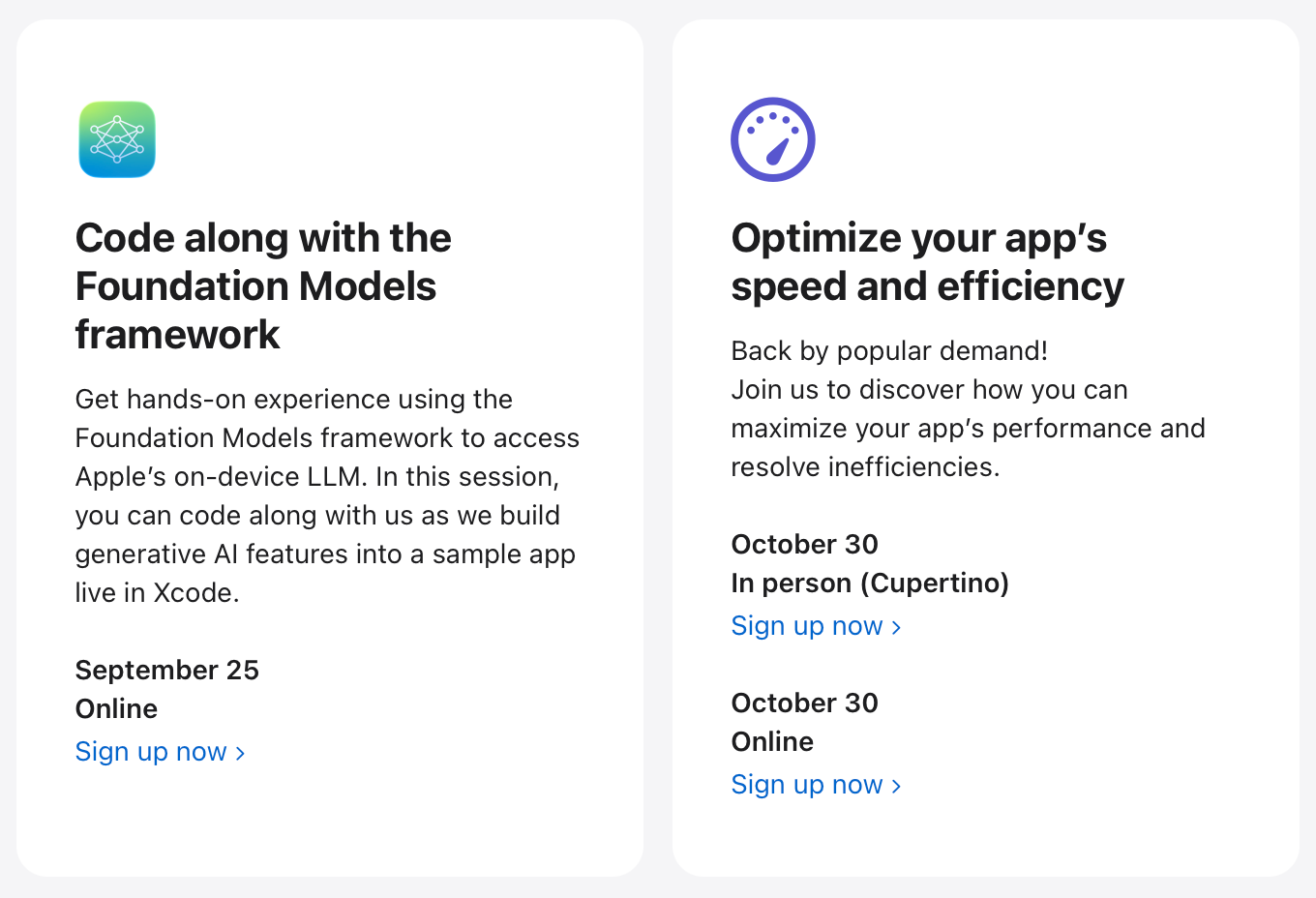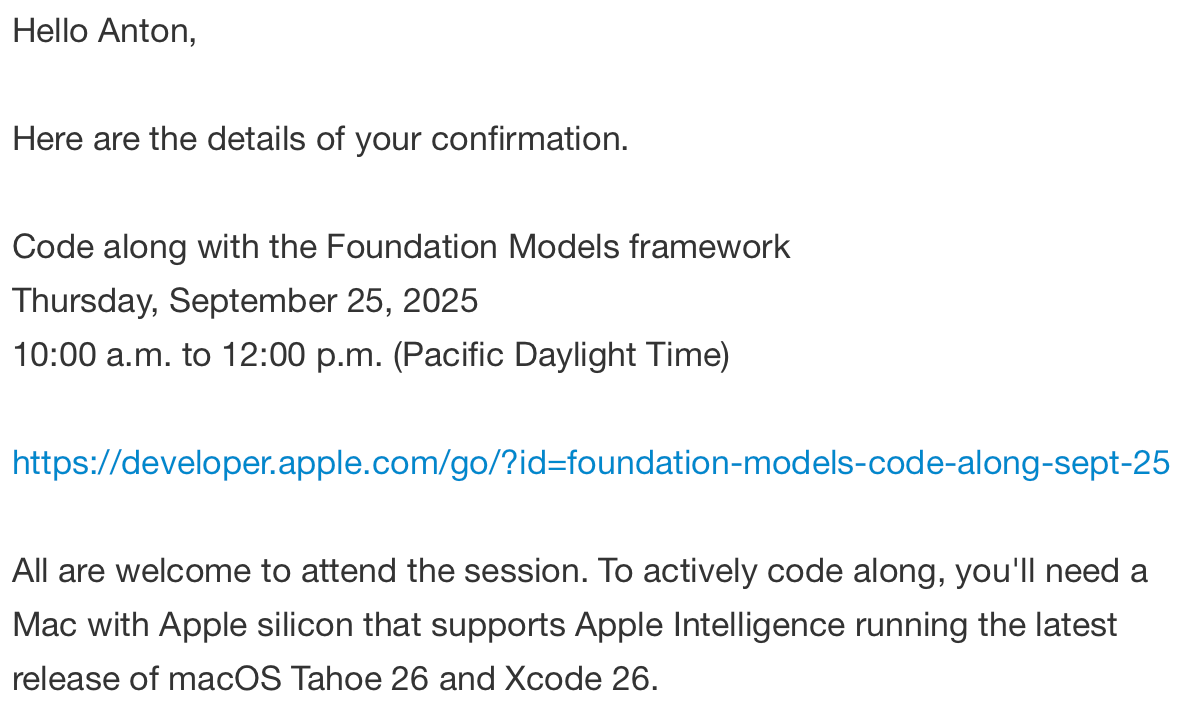iOS 26: Foundation Model Framework - Code-Along Session
New educational approach from Apple
My Doubts
I’ve been debating whether to post this, in what format, and whether it might be unfair. However, any study can begin on the Apple Forums, where everyone publicly discusses questions and waits for Apple Engineers to reply. But what if there’s a shorter, faster way? Let me first explain what happened on September 25, 2025.
Code-Along Session
This year, Apple introduced an online code-along session for developers to join—a completely new format. In the past there were Labs, on-site events, and 1-on-1 sessions during and after WWDC, but this live-coding webinar stands apart.
How to Attend
As a member of the Apple Developer Program, I received an email invitation.
After signing a short form linked to my Apple Developer account, another email with a calendar event arrived in my inbox. Then it was just a matter of waiting.
Day of the Event
The link was later updated and, besides the usual info, now included a Resources section in the footer.
Here’s what the instructions meant: a code-along is where you work on a project and its features together with an Apple Engineer. In this session, we learned how to add Apple’s on-device LLM to an app using the Foundation Models framework—building generative-AI features in Xcode with text generation, structured output, streaming, and tool calling.
Following the live demo, we used Playground snippets to test APIs, then applied them to update SwiftUI views and view models. By the end, we had a working sample app and the know-how to bring Foundation Models into our own projects. Isn’t that great?
How It Went
After a short intro—and after confirming that macOS Tahoe and Xcode 26 were set up and the project built correctly—we followed the host. The Foundation Models framework was explained from basics to performance tweaks:
What is the Framework
When it suggested to be used
How to make a basic prompt
Then how to make a dynamic one
@GenerablemacroTooling
Performance suggestions and tips
All of this came with live demos and interaction. For me, as someone who attended similar events years ago, it was fun and engaging. What’s better than applying and coding the logic from scratch? I’d definitely join again for other topics.
When Will be Other One
The format is still taking shape. Apple gathered feedback right after the code-along and is reviewing interest and topic coverage. In private chats, most of my friends said they’ll attend next time and are thrilled that such an online format now exists.
Here’s one last—and just as valuable—detail. During the session a Q&A tool let us ask questions about the stream or the framework in general. The host wasn’t interrupted because assistant developers were answering questions and sharing links in real time. Imagine Apple Forums with instant replies—for two hours straight!
Some questions were about setup and session steps, but many focused on generative-model limitations, contexts, and localization. Some info had been highlighted at WWDC, some discovered during iOS 26 research and adoption, and many questions were brand-new and fascinating. I found plenty of new insights even during the stream.
For example, we learned how to set model availability from the Scheme Context and provide user feedback about it—within the first five minutes! There were several other moments like this that made the event completely worthwhile.
And that on a first 5 minutes ) There were some other moments like this which totally made me satisfied after attending.
What Next
After experiencing this event, it’s no surprise that I recommend it to developers of all backgrounds. It’s great to see new approaches to engaging us, even though webinars have existed for years.
Apple is catching up to community expectations: from a growing YouTube channel to extra labs throughout the year—and now this. The more ways to learn, the better, since some prefer videos, others articles, and others slides. A code-along gives you all of that in one place.
The Q&A session included so many questions that I’ll cover it in my next post. That way it won’t be buried here, and you’ll already know the context.





